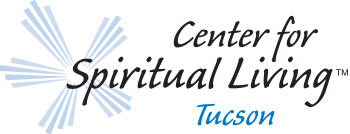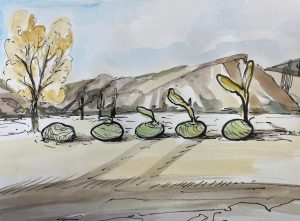Gratitude In All Things by Sharon Whealy, RScP
 We are all familiar with gratitude lists as a tool to help us shift our thinking. We sit down with a piece of paper and list all the things we are grateful for: our home, our work, our family and friends, food on the table, good health. The list goes on. This practice of gratitude tends to focus on all the things we already have in our lives, and not so much on what we desire to have in our life.
We are all familiar with gratitude lists as a tool to help us shift our thinking. We sit down with a piece of paper and list all the things we are grateful for: our home, our work, our family and friends, food on the table, good health. The list goes on. This practice of gratitude tends to focus on all the things we already have in our lives, and not so much on what we desire to have in our life.
Zen Master Sono shared this practice of gratitude saying, “Thank you for everything. I have no complaints whatsoever.” (SOM Magazine Nov. 2023). I journaled about this passage, delving into the idea of being grateful for everything, without complaint at all. How do we get to that place of gratitude for everything, not just the things we love having in our lives, but everything else that we would rather just go away?
For me, the first step is acceptance, can I acknowledge what has happened, or is happening, just as it is? It is done, and now it is up to me to choose how to respond. I can fight it, rail against it, try to change it, or I can say, okay – this is what is happening now.
My next step is to breathe and center, to get myself into present time. I look around and check in with what is actually happening right now, in this eternal moment of now. This allows me to remember and know that God / Spirit / Love / Life is right in the middle of what is happening and so it must be good, often despite appearances! Then I anchor that with Spiritual Mind Treatment (God is, I am, all is well and good, I am Grateful, and so it is).
Finally, I continue to look for the good in every situation. Anytime there is a natural disaster; floods, fires, hurricanes, etc., people come together to help each other. During Covid we saw the planet begin to heal, we gave each other space, and we learned new ways of staying connected. It is often when we hit “rock bottom” that the deepest shift and healing begin.
In Joe Dispenza’s Becoming Supernatural, he talks about manifesting the life of our dreams. About gratitude he says, “Gratitude is a powerful emotion to use for manifesting because normally we feel gratitude after we receive something. So, the emotional signature of gratitude means it has already happened. When you are thankful or you feel appreciation, you are in the ultimate state to receive” (pg. 82)
Lately I have been playing with the idea of being grateful for things that have not happened yet. When Jesus blessed the loaves and fishes, he gave thanks for the abundance they were about to receive. To open our last Gratitude Rainshower I read from Colette BaronReid’s The Dream Weaver’s Oracle, card 31, “When the Birds Sing Grat-it-tude”: “The true manifesting power of gratitude is the declaration in advance of your needs being met. . . . Can you be thankful for whatever happens?”
Next Gratitude Rainshower is Tuesday, February 25 th at 6:30pm on CSLT’s Zoom room.
-In all things, may you be grateful. Blessings. Sharon













